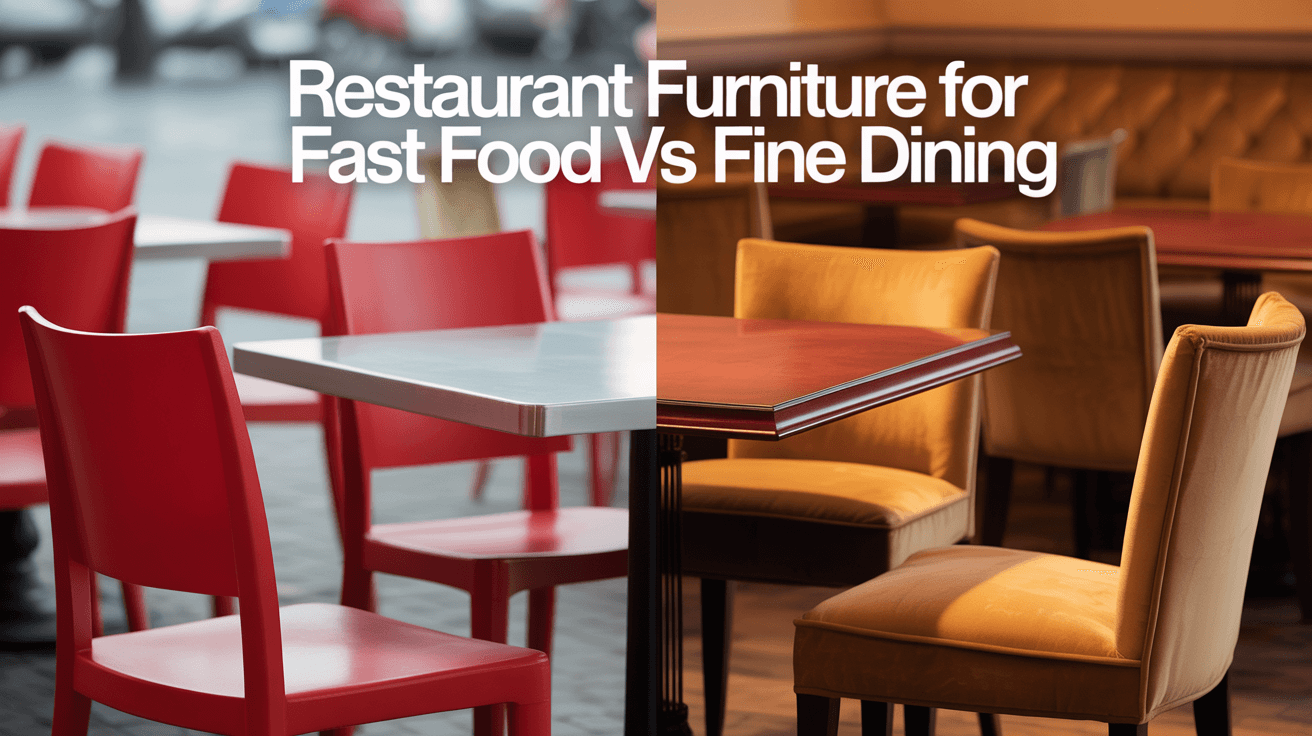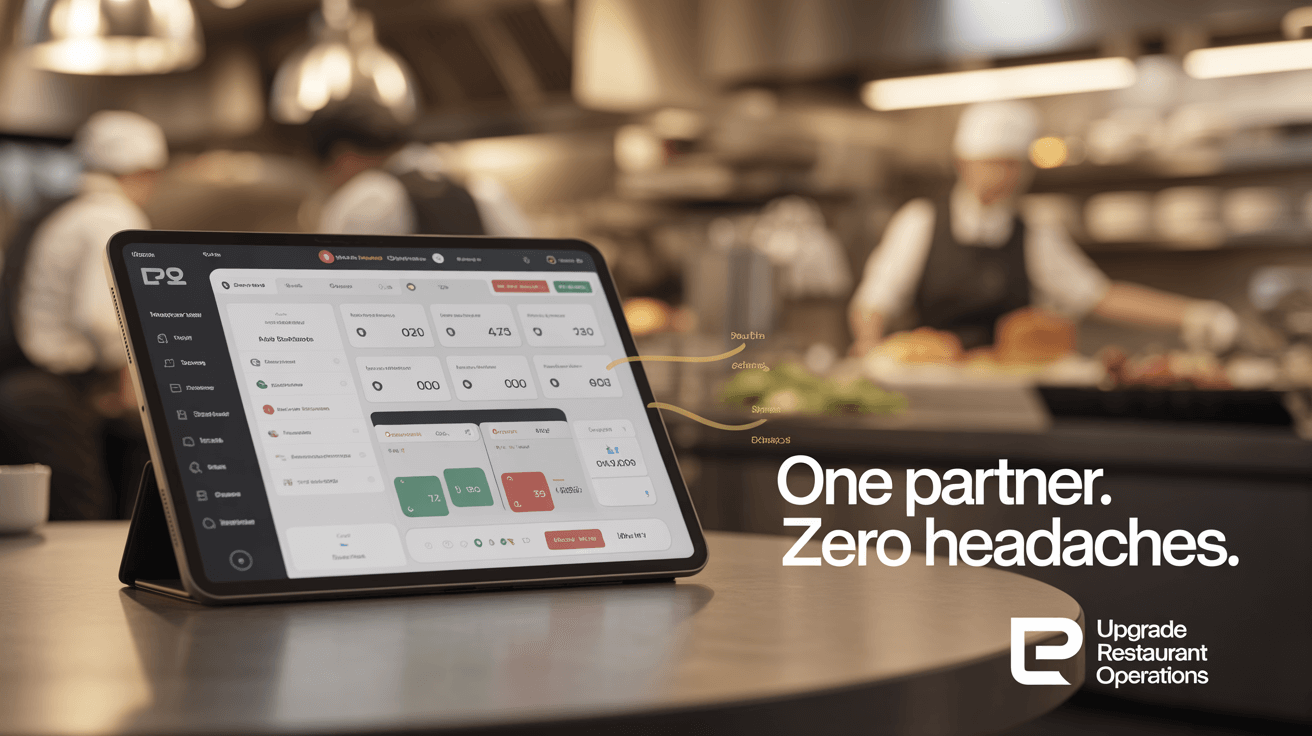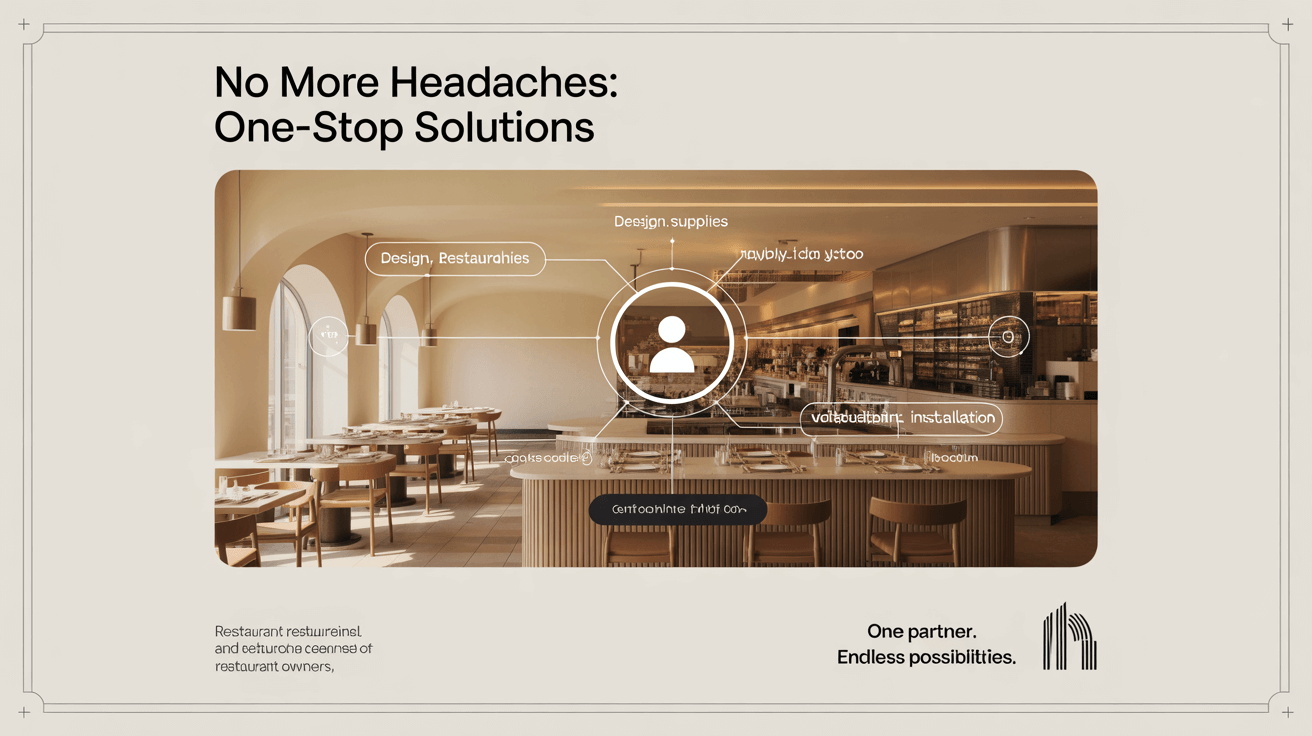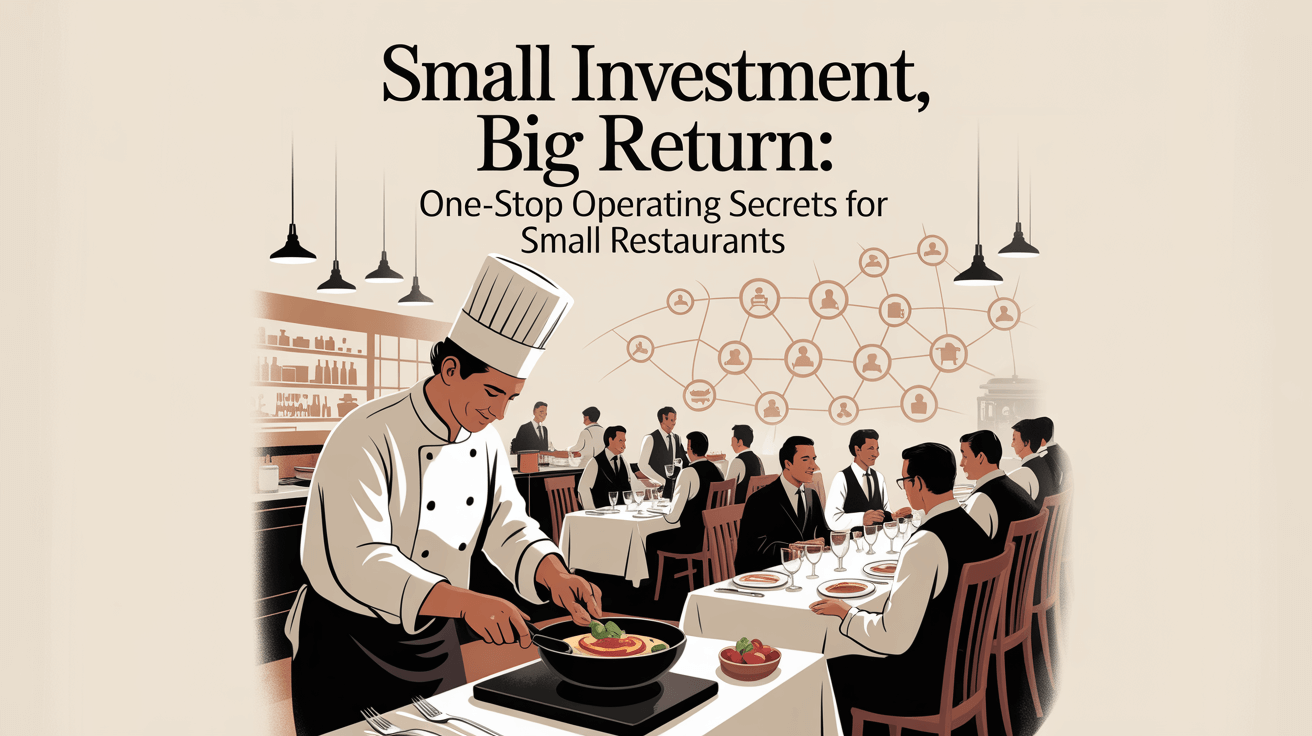Restaurant Furniture for Fast Food vs Fine Dining: What’s the Difference? breaks down seating and table choices so you match style, durability, and guest expectations. But here’s the kicker… picking the right furniture transforms throughput and ambiance.
1. What frame materials suit fast food vs fine dining?
● Fast food uses powder-coated steel for speed and low cost
● Fine dining favors kiln-dried hardwood for elegance and durability
● Fast food frames prioritize light weight for quick turnover
● Fine dining frames focus on heft and stability for comfort
Ready for the good part? frame choice drives both speed and luxury.
| Venue Type | Frame Material |
|---|---|
| Fast Food | Powder-coated steel |
| Fine Dining | Kiln-dried hardwood |
2. How do seat styles differ?
● Fast food features molded plastic or vinyl stools
● Fine dining opts for upholstered chairs with arms
● Fast food seats are stackable for cleaning speed
● Fine dining seats include padding for longer stays
What’s the real story? seating style impacts dwell time
3. Which table heights and shapes apply?
● Fast food tables at 28″ height, square or round tops
● Fine dining tables at 30″ height, often round or custom shapes
● Fast food tables use laminate surfaces for easy cleaning
● Fine dining tables use wood or stone for upscale feel
This is where it gets interesting… table specs shape guest pace.
4. What surface materials work best?
● Fast food favors high-pressure laminate or melamine
● Fine dining selects real wood veneers or marble
● Fast food surfaces resist scratches and spills
● Fine dining surfaces highlight grain and finish
But here’s the kicker… surface finish dictates upkeep.
| Venue Type | Surface Material |
|---|---|
| Fast Food | High-pressure laminate |
| Fine Dining | Wood veneer or marble |
5. How does upholstery differ?
● Fast food uses vinyl or faux leather for quick wipe-downs
● Fine dining uses top-grain leather or performance fabric
● Fast food upholstery rates ≥50K double rubs
● Fine dining upholstery balances look with code compliance
Ready for the good part? fabric choice affects both style and cleaning.
6. What table bases suit each concept?
● Fast food uses pedestal bases for clear legroom
● Fine dining uses ornate metal or wood-carved bases
● Fast food bases bolt to floor for stability
● Fine dining bases focus on visual detail
What’s the real story? base style anchors overall look.
7. How do layout needs vary?
● Fast food prioritizes high-density, tight layouts
● Fine dining leaves space for privacy and flow
● Fast food aisles at 30″–36″ for quick service
● Fine dining aisles at 42″–48″ for comfort
This is where it gets interesting… layout determines turnover vs leisure.
| Layout Aspect | Fast Food | Fine Dining |
|---|---|---|
| Aisle Width | 30″–36″ | 42″–48″ |
8. What lighting and fixtures pair well?
● Fast food uses bright, uniform overhead lighting
● Fine dining uses pendants and dimmable sconces
● Fast food fixtures resist vandalism and frequent cleaning
● Fine dining fixtures highlight craftsmanship
But here’s the kicker… lighting sets the mood and speed.
9. How do color schemes reflect concepts?
● Fast food chooses bold, high-contrast hues
● Fine dining opts for muted, sophisticated palettes
● Fast food accents guide wayfinding and branding
● Fine dining accents enrich the dining narrative
Ready for the good part? color impacts perception and behavior.
10. What warranty and maintenance differences exist?
● Fast food furniture warranties focus on heavy use
● Fine dining warranties include finish and upholstery
● Fast food maintenance cycles run weekly
● Fine dining maintenance cycles run monthly
This is where it gets interesting… service plans mirror usage patterns.
| Aspect | Fast Food | Fine Dining |
|---|---|---|
| Warranty | 1–2 years | 3–5 years |
11. How do budget considerations compare?
● Fast food budgets $100–$200 per seat
● Fine dining budgets $400–$800 per seat
● Fast food ROI targets high turnover
● Fine dining ROI targets higher checks
What’s the real story? budget aligns with concept goals.
12. What compliance and safety standards apply?
● Fast food must meet ANSI/BIFMA seating durability
● Fine dining adds fire-retardant upholstery codes
● Fast food surfaces require slip-resistant bases
● Fine dining must meet ADA and aesthetic standards
But here’s the kicker… compliance prevents shutdowns and fines.
| Standard | Fast Food | Fine Dining |
|---|---|---|
| Upholstery | CAL-TB 117 | NFPA 701 |
13. How does technology get integrated?
● Fast food adds built-in tray holders and kiosks
● Fine dining embeds USB and mood lighting discreetly
● Fast food tech focuses on efficiency
● Fine dining tech focuses on ambiance
Ready for the good part? tech enhances both speed and luxury.
14. What customization options differ?
● Fast food uses printed logos on tabletops
● Fine dining uses carved inlays and embroidered fabrics
● Fast food custom runs focus on branding
● Fine dining custom runs focus on artistry
This is where it gets interesting… customization deepens guest connection.
| Custom Element | Fast Food | Fine Dining |
|---|---|---|
| Logo Placement | Printed tops | Carved inlays |
| Upholstery | Vinyl prints | Embroidered |
15. How do lifecycle expectations vary?
● Fast food furniture cycles every 2–3 years
● Fine dining cycles every 5–8 years
● Fast food depreciation based on heavy use
● Fine dining depreciation based on style trends
What’s the real story? lifecycle planning shapes capital budgets.
Conclusion
Choosing furniture for fast food versus fine dining hinges on frames, seating style, surfaces, and layouts that match speed or sophistication. Align choices with concept goals to maximize guest satisfaction and profitability.
FAQ
Q1: What’s the ideal seat budget for fast food?
Aim for $100–$200 per seat to balance durability and cost
Q2: How often replace fine dining furniture?
Plan refresh cycles every 5–8 years based on style updates.
Q3: Can fast food furniture be upholstered?
Use performance vinyl rated for heavy cleaning and use
Q4: Should fine dining tables be custom made?
Custom tops and bases elevate the luxury experience.
Q5: What warranty term is standard?
Fast food: 1–2 years. Fine dining: 3–5 years.






